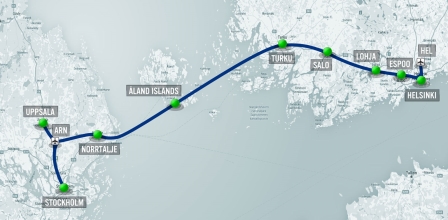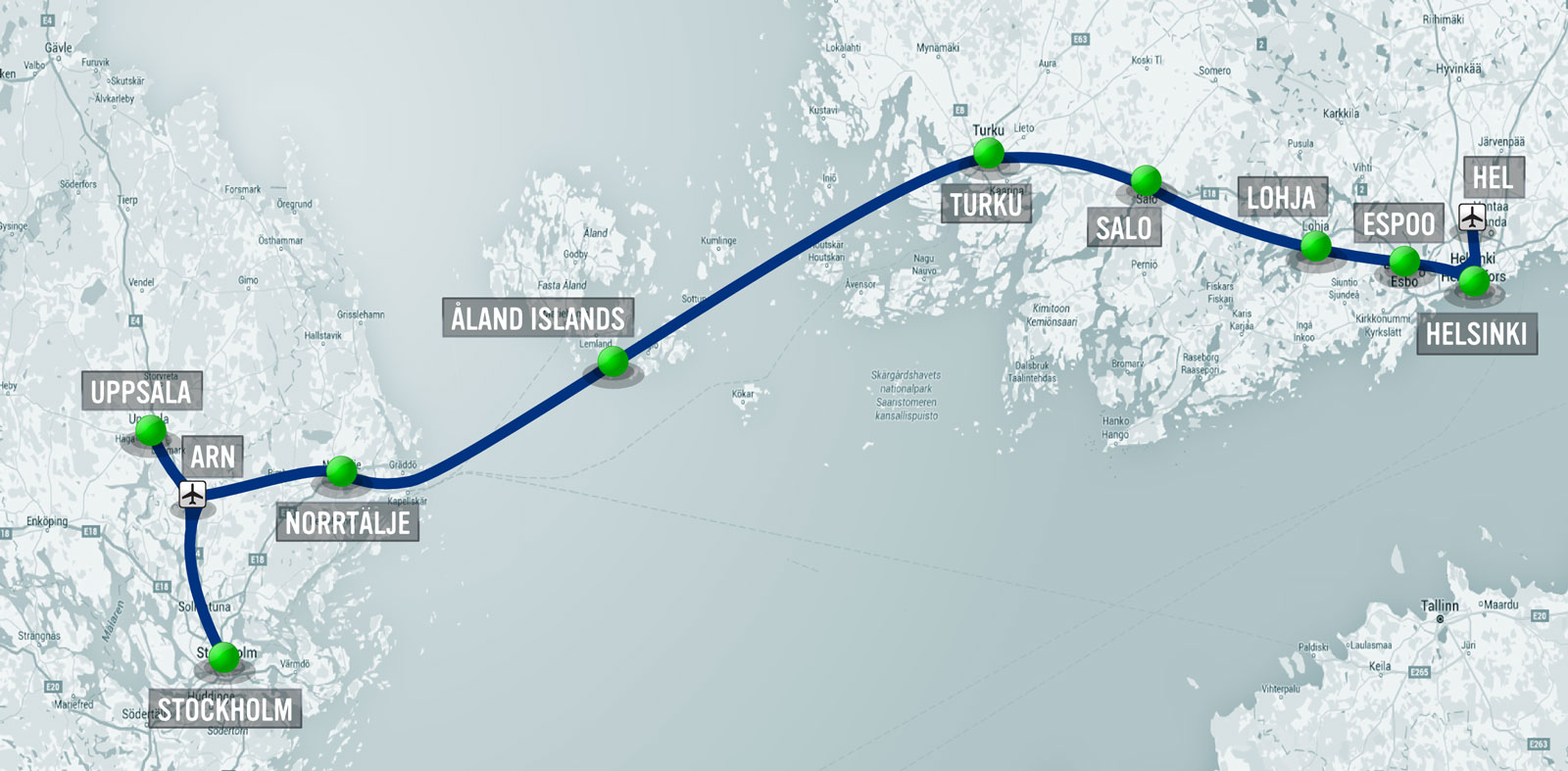Hyperloop One ‘proves’ it’s cheaper than high-speed rail
Since its conception, Hyperloop pioneers have been unable to answer the one question that matters: how much cheaper will it be compared to high-speed rail? Hyperloop One now feels confident enough to publish a feasibility study that makes the case that zooming across the globe in vacuum tubes is affordable. This particular examination concerns a project to connect Stockholm and Helsinki as one super-sized metro area. Suffice to say, the headline stat is this: the per-mile cost of building this loop is pegged at around $40 million per kilometer. By comparison, the World Bank estimates that California’s slower, less efficient High Speed rail project will cost $56 million per km.
The study was prepared by giganto accountancy firm KMPG for FS Links, a Nordic company that’s pushing the idea of connecting Finland and Sweden with high-speed travel. Currently, a flight between the two cities takes around an hour, plus the associated early-arrival ball-ache that’s necessary for all air travel. By comparison, a trip in a Hyperloop tube is expected to take 30 minutes, without the need to turn up two hours beforehand and take your shoes off. The total cost for the project would be around $21 billion which, again, looks good compared to California’s $64 billion rival.
The Nordic Hyperloop in this model is broken into three distinct parts that could be constructed separately should investors get squeamish. First up, there would be two domestic routes that join Stockholm and Uppsala to Norrtalje which is close to the Swedish coast. On the other side of the Baltic, a line would join Helsinki Airport to Turku (close to the Finnish coast) via Helsinki, Lohja, Salo and Turku. Finally, an international line would actually be tunneled under the sea via the Aland islands, which would get its own stop.
Build time has often been touted as another major selling point for Hyperloop since it’s, essentially, just a slightly bigger oil pipeline. Pre-fabricated tubes can be mounted onto pylons and sealed quickly and efficiently, theoretically reducing the decades-long process to a few years. According to this report, the two land-based networks could be built in as little as eight years, and can be run while the undersea link is finished off. The underwater tunnel would take an additional four years to build, but a twelve-year wait seems fair given the potential benefits on offer.
Hyperloop’s leaders are bullish that the sheer volume of paying customers will enable ticket prices for individual consumers to be kept low. The report estimates that 42.7 million passengers will ride the system each year, each paying an average price of $28. Domestic trips inside each country, for instance between Helsinki to Turku, would cost less, with a premium being placed on international trips. The company believes that despite this, operating profit would clock in at $900 million each year — with initial investment being paid off in around two decades.
As well as a business case, the paper describes the wider benefits to the Nordic economy, such as reducing real estate crunches. Stockholm, for instance, is suffering from a huge property shortage, which would be alleviated in an instant if people could commute in from a neighboring city in a matter of minutes. Not to mention it’d help the prospects of those thousands of former Nokia/Microsoft employees who would now be able to get tech jobs in other parts of the region without uprooting their families.
After showing off some basic math that demonstrates that, on paper, Hyperloop is feasible, it’s now time for the firm to prove the technology actually works. The company’s still expecting to have a working demo at its Las Vegas facility by the end of the year, although progress might be slowed after the departure of its cofounder. Either way, it looks as if Hyperloop has made a strong enough case to justify Elon Musk’s initial optimism, and now it’s in the hand of investors to put a hand into their pockets.
(76)




